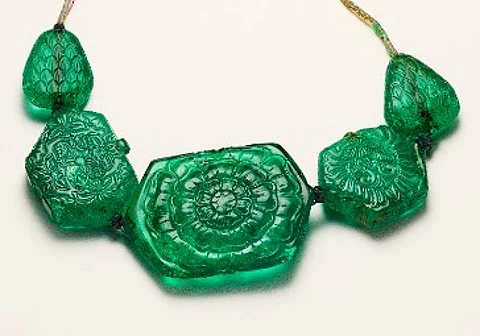

The necklace, believed to have originated from the Mughal Empire in the 18th century, features five intricately carved Colombian emeralds with a total weight of 1,178.50 carats. Set on gold and magenta silk cords, the striking piece includes three hexagonal emeralds — the largest weighing an extraordinary 470 carats — and two pear-shaped stones, all bearing detailed engravings.
One of the most remarkable elements of the necklace is an inscription on the central emerald bearing the name Ahmad Shah Durr-i Durran, the founder of the Durrani Empire, whose title translates as "Pearl of Pearls."
The necklace has a storied provenance, having once been part of the famed Mughal treasury that fell into the hands of Nader Shah, ruler of Iran, during his 1739 invasion of Delhi. Nader Shah, remembered as one of the most formidable military leaders in Persian history and a former custodian of the Koh-i-Noor diamond, seized vast riches from the Mughal court, including this necklace.
The auction house had placed the piece in the $2 million to $3 million range, but fierce bidding from collectors and institutions pushed the final price to $6.2 million, reflecting both the historical significance and exceptional craftsmanship of the necklace.
The sale highlights a growing interest in jewellery with royal and colonial-era connections, particularly from South Asia and the Middle East. Christie’s described the necklace as “an exceptional example of gem carving, royal heritage, and cultural fusion from one of history’s most influential periods in jewellery design.”
The buyer of the piece remains undisclosed.
